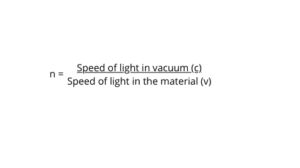Introduction
Why do stars twinkle? Sometimes such simple questions arise in our minds. Well, if we describe this in scientific terms then the twinkling of the star is a consequence of the turbulence of the Earth’s atmosphere. It is one of the many features of Stellar scintillation seen by the human eye.
Stellar scintillation is described as the effect produced by the scattering of light from refractive index variations in the Earth’s atmosphere. The refractive index variations cause changes in the phase of the light and these, in turn, lead to intensity variations. The intensity may vary spatially and temporally forming what is often referred to as a shadow pattern at the Earth’s surface. The twinkling of stars arises from the motion of this shadow pattern across the eye as well as from fluctuations in the pattern itself. Since the eye is a rather slow detector, the twinkling is a time-integrated observation of the complete scintillation process (1).
Let us understand in simple words why stars twinkle. But before that, we need to understand refraction and atmospheric refraction.
What is Refraction?
Refraction in physics means a change in the direction of a wave (light wave, sound wave, and water wave). When it passes from one medium to another. Therefore the light from the star undergoes refraction before entering the earth’s atmosphere because of change in the medium. As a result, the refractive index changes gradually.
The refractive index or the index of refraction is the ratio of the speed of light in a vacuum to the speed of light in the material

Why do stars twinkle?

The apparent position of the star is different from the actual position. As the atmosphere bends the starlight the star looks slightly higher when seen from near the horizon. This position of the star keeps on changing with the changing atmosphere because of its dynamic physical conditions. The stars are very far away and appear as a point-size source of light. Due to constant changes in the physical conditions of the medium through which the light is traveling, the apparent position of the star fluctuates. And the amount of light that enters our eye thus flickers. Therefore we can see the twinkling effect of the star as the light from the stars sometimes gets brighter and sometimes gets fainter.
